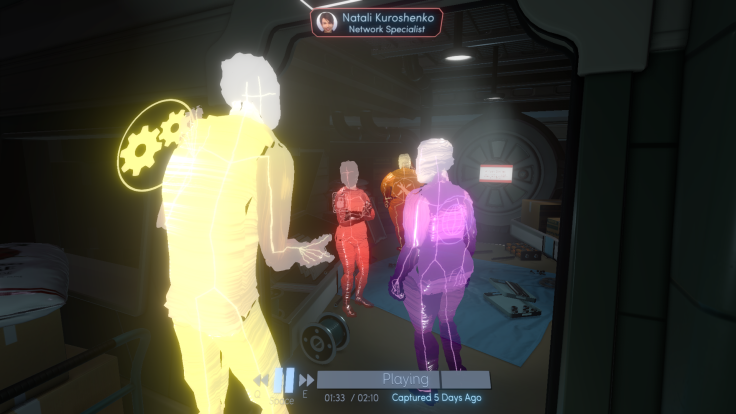Tacoma creator and Fullbright Company Founder Steve Gaynor quickly emerged as a leader in story-based games with the studio’s debut release of Gone Home in 2013. In an exclusive interview, we discussed some of the most pressing issues facing the industry. Is it truly prohibitively expensive to build a single-player game? Can indie studios carry the mantle where triple-A publishers like Electronic Arts have left off? You might be surprised by his answers.
Just days after EA announced the closure of Visceral Games and the refocusing of its headline-grabbing, narrative-driven Star Wars project, Gaynor was hopeful that companies like his have the business structure to keep story-centric games afloat.
“While indie developers do have to keep the lights on, they also have more freedom to make the games they want to make,” he said. “You don't have somebody from EA saying, ’yeah, but how is this going to be as profitable as FIFA?' Because it's not.”
Gaynor remains committed to crafting single-player experiences, even as large publishers like EA have transitioned into a microtransaction-laden, games-as-service monetization scheme. In recent days, the shackled progression of games like Star Wars Battlefront 2 made waves for pushing players towards their wallets at the expense of solid gameplay.
In our chat, Gaynor admitted, “There can be something very lucrative about that, and there can be aspects of building a game that you only have access to if you are making it this constant, ongoing dialogue with your audience and building it into a long-term experience.”
But for this former triple-A industry professional, who previously worked with 2K Games on the BioShock series, there’s a reason these ongoing payment models have become so essential. While some critics might dispute the fact that game development costs have ballooned in recent years, Gaynor has seen the inflation firsthand.
“There's no way for [development] not to be expensive,” he told Player.One. “When you are working in the triple-A space, you can't say 'we're going to intentionally make something that visually looks way worse than a Naughty Dog game' and still have people want to put their $60 into it. So the response is to make something big, beautiful and incredibly expensive. At that point, if you're running the books for Ubisoft or whatever, I'm sure you are thinking 'why aren't we doing a free-to-play thing where you buy loot boxes and we make billions of dollars?'
“When you increase fidelity, when every character you encounter has to be 40,000 polygons and have six different texture maps to make their skin look perfectly skin-like, and every room you go into has to have 500 different unique objects in it so it looks like a real storage room... Nobody's going to look at any of that stuff, but they're going to feel they're in a cluttered room. And somebody has to make all of it,” he explained.
Paid experiences like Battlefront 2, Middle-earth: Shadow Of War, NBA 2K18 and the hundreds of mobile games that appear on Google Play and the App Store every day face similar constraints. While Gaynor has even seen many of his fellow indies capitalizing on the ongoing monetization method, Fullbright has no plans to support it. When asked if this model could be applied to the studio’s next game, Gaynor chuckled and said, “I don't think [what’s next] will be a free-to-play, game-as-service multiplayer online shooter.”
Tacoma is available now on PC and Xbox One, while Gone Home can be purchased on both platforms as well as well as PS4. Stay tuned for more of our conversation with Gaynor in the days ahead!
Do you feel triple-A publishers are somewhat justified in pushing for microtransactions? Will this model fade due to consumer backlash? Tell us in the comments section!














![[EG April 19] Best 'Stardew Valley' Mods That Will Change](https://d.player.one/en/full/226012/eg-april-19-best-stardew-valley-mods-that-will-change.png?w=380&h=275&f=955520b8313253ee3c39c791f6210f38)



